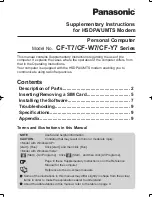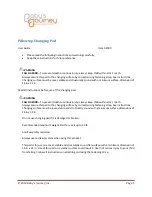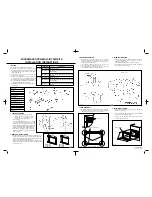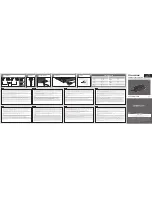
75.5911.02 20180226
Page 5 of 9
Master and Slave Module Jumper Settings:
Prior to power-on, all jumper settings on the Master and Slave boards should be set
according to the installation.
Jumper settings include:
§
Function J1: Background Analysis (Master and Slave boards)
§
Function J2: Relay Mode (NO / NC) (Master board only)
§
Function J3: Monitoring Mode (Master board only)
§
Function J4: Master Only or Master and Slave Configuration (Master and Slave boards)
1.
Jumper J1 (Background Analysis) is a 3-pin configuration located on each module. Background Analysis is the ability to analyze the background
in the area of the detection field, to help reduce chances of non-detection due to faulty environmental situations. When ON, Background Analysis
allows constant detection in the event of one or more of the following situations:
o
Module aimed too high
o
Module incorrectly oriented (towards sky, for example)
o
Defective amplification chain
o
Faulty infrared transmitter
o
Not enough reflectivity off of floor surface
NOTE: Floor must have at least 5% reflectivity to allow Background Analysis to function properly.
This configuration greatly reduces the chance of allowing the modules to function less than optimally. If one of the above-stated faults exists,
the detector will remain active, thereby causing the door to stay open or to not open. This fail-safe operation will cause the door to be inoperative
in the automatic mode, since there will be a constant signal either to the safety input or to the activation input of the door control, depending on
which module is sensing detection. If an extremely IR-absorbent floor is present, set J1 to Background Analysis mode.
The J1 function must
be set on each module.
Background Analysis Mode – 3-Pin Jumper:
Center pin and left pin are for Normal Mode, center pin and right pin are for Background Analysis
mode.
2.
J2 is a two-position jumper (
ON THE MASTER BOARD ONLY
), which enables either a passive or active relay to be selected. The
SuperScan-T comes factory-preset with the relay in the ACTIVE MODE.
ACTIVE RELAY: RELAY ENERGIZED WHEN DETECTOR IS AT REST
ACTIVE RELAY + NC & COM TERMINAL CONNECTION =
CLOSED CONTACT DURING DETECTION
§
Use the NC and COM terminals (5 and 6) and leave JP2 at the factory-preset position.
§
LED indication during detection: Green LED is OFF, red LED is ON
§
Upon power loss, the contact will be closed.
ACTIVE RELAY + NO & COM TERMINAL CONNECTION =
OPEN CONTACT DURING DETECTION
§
Use the NO and COM terminals (4 and 6) and leave JP2 at the factory-preset position.
§
LED indication during detection: Green LED is OFF, red LED is ON
§
Upon power loss, the contact will be open.
View Looking
Toward P1
J2
MECHANICAL
ADJUSTMENTS
PRIOR TO
POWER-ON
J2
View Looking
Toward P1



























